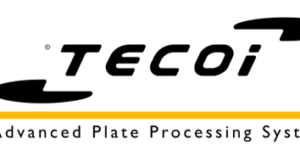A Seat Belt for Cutting Tools
Brendt Holden of Haimer USA examines new precision tool holder technology that prevents the danger of pulling the cutter out of the chuck with the increased force behind high performance cutting.
Posted: August 11, 2008
The aerospace industry constantly searches for new technology that allows them to produce their parts faster, with greater accuracies and reliability. The expanding varieties of alloys being machined for aircraft manufacturing, and the high raw material prices associated with these materials, all add to this challenge.
Such a demanding combination of requirements (faster productivity in hard-to-machine, expensive exotic materials) has prompted a full assessment of the complete machining process by engineers at the world's leading aircraft manufacturers.
Aerospace engineers usually study a great number of factors in order to find the best solution for their machining process. The first element they typically review in the machining process is the machine tool selection for the particular machining application, followed by an investigation into the fixturing of the workpiece. Once this baseline setup is established, the engineers then look closely at the cutting tool technologies available.
Cutting performance plays an important role in a plant's production. Special materials (such as aluminium, titanium, and composites) and part geometries always present difficulties in aircraft machining processes.
For example, one specialty in the aerospace industry involves cutting large structure components which, in most cases, show a high number of cavities. These work pieces are cut from the solid, with often 90 percent of the original material being machined.
Other challenges include titanium machining, where the cutters move quite slowly but aggressively chip away at the material. For these reasons, a number of extremely specific carbide grades and coatings are available for use with specific geometries to provide the best machining process possible for efficient cutting.
Finally, the method of holding the cutting tool is examined. The tool holding technique is crucial in the overall machining process. In fact, all of these processes must execute in top quality and precision: not only the machine tool, but the cutting tool and its tool holder are all responsible for providing a properly machined workpiece.
With competition forcing the aerospace industry to maintain high productivity, high performance cutting (HPC) ? which uses the driving power to full capacity to cut into the material with a high feed ? is very popular, especially since special cutting tools on the market can support this kind of machining. These cutters resist the conditions of high torques, feed and tensile forces without breaking.
However, the danger of pulling the cutter out of the chuck with this force increases in the case of tool holders that offer precise clamping with high run-out accuracy, such as shrink fit chucks, milling chucks, hydraulic chucks or press fit chucks that use friction to clamp the tool. Their clamping force is limited and sometimes insufficient for HPC (in this case, the cutting tools are very expensive).
As an alternative, many applications use conventional set-screw endmill holders to grip the tool via a clamping screw that locks down on a flat. This technique can generally transmit any desired torque until the cutter finally breaks. Set-screw endmill holders, however, carry disadvantages with imprecise run-out (which causes poor clamping because the shank in the chuck needs a little clearance) and a short cutting tool life, which are very expensive in this case.
No further alternatives existed until a patented solution was developed that combines a shrink fit chuck or another high-precision chuck with locking elements. Its principle follows that helical grooves are ground on the cutter's shank for form-closed drivers. The helical form of the groove protects the tool against overturning and pulling out. The drivers, which can be balls or rods, are integrated in the chuck. This unifies the high accuracy advantages of clamping with the advantages of positive locking.
With the helical form of the grooves, the tool's length can be adjusted. The clamping process is easy since the chuck is heated as usual and the tool is inserted with a turning move. The balls or rods locate themselves into the grooves. A spring supports the accurate fitting of the tool. After a few seconds the holder gets cold, so that there is a friction- and form-closed connection.
The modification to the cutting tool shank is easy and symmetrical. In fact, cutting tool suppliers find they are able to add these grooves to standard stocked endmills (even endmills having an existing weldon flat). The grooves do not greatly affect the balance (an issue with the weldon flat) and they keep the cutting tool stronger (because the grooves are very shallow, instead of a deep weldon flat cutting through a great portion of half the shank).
This system has proven its practical suitability in several occasions after intensive internal and external tests. Standard shrink fit chucks convinced the engineers of their quality with their excellent run-out accuracy of 3 microns (0.0001 in), a low-vibration design and highly precise machining results.
However, extreme titanium machining raised additional problems with high precision chucks: the cutting tools were pulled out of the chuck due to the tough application after machining for a period of time. The cutting tool would essentially creep out of the chuck, potentially scrapping out very expensive titanium parts. Alternatively, set-screw endmill holders or whistle notch holders were unable to reach the precision, resulting in insufficient cutting tool life and limited feed rates.
For this reason, the production staff at a large American aircraft manufacturer wanted to test a new generation of shrink fit chucks using this new system to compare them against their existing weldon holders. A new chuck with a 32 mm bore and gage length of 120 mm was inserted on a vertical milling machine. For roughing and finishing, the same coated solid carbide tool type (with an effective cut length of just over 80 mm) was used. The test workpiece was a critical aircraft component made of titanium.
The results of this test exceeded all expectations. In the test, the run-out accuracy was measured at the tip of the tool in the machine spindle (170 mm total length).
It reached 5 microns (0.0002 in) with the new chuck. Under the same preconditions a set-screw endmill holder reached only values between 0.05 mm to 0.08 mm (0.0020 in to 0.0030 in) ? more than ten times worse than the results of the new chuck.
Pulling out of the tool was no problem in the interface of the cutting tool and the new chuck. In fact, the tool didn't move at all during the whole process ? and expensive material was spared from the scrap bin. The new system in essence provided a "seat-belt" for the cutting tool, assuring a lack of cutting tool pull-out (no scrapped parts) and higher accuracies allowing for more aggressive machining and a higher metal removal rate.
Tool life more than doubled due to the new chuck. The engineers also discovered they could produce 120 percent more parts with the same cutting tool due to the stable cutting and better run-out conditions. Part surface showed considerable differences when roughing and finishing compared to the set screw holder. Very few chatter marks appeared since no vibration occurred in the new system.
Finally, when combining the new chuck with more aggressive multi-flute cutters, feed rates could be drastically increased to ultimately machine parts faster.
The principle of this new tool safety system is not limited to shrink fit chucks. It can also be integrated in a collet chuck, milling chuck or a hydraulic chuck application to machine parts faster and keep up with production. Pulling out of the tool ? and scrap associated with it ? should never be a problem again.
Brendt Holden is the president of Haimer USA, LLC, 134 E. Hill Street, Villa Park, IL 60181, 630-833-1500, Fax: 630-833-1507, www.haimer-usa.com.












